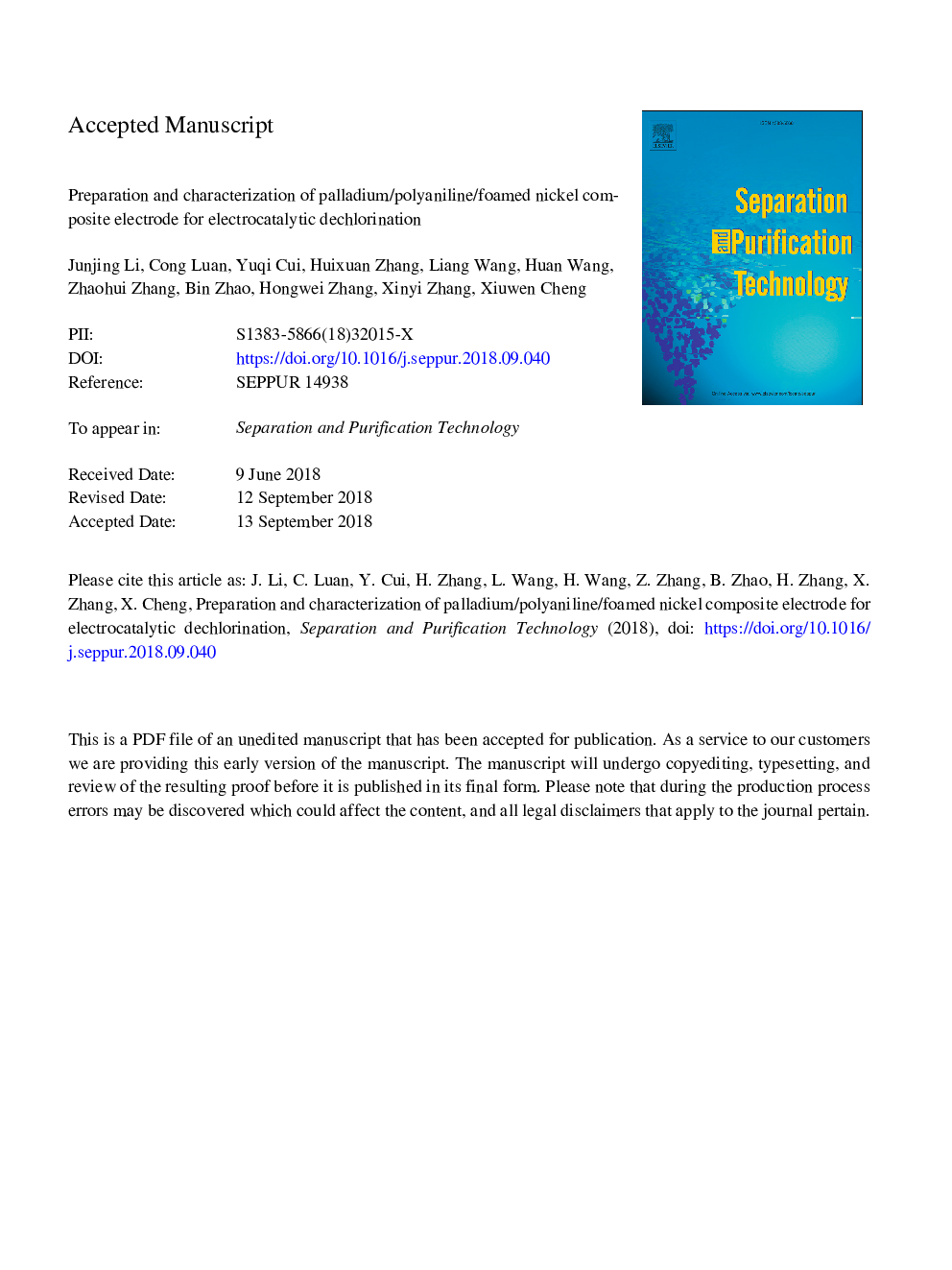| Article ID | Journal | Published Year | Pages | File Type |
|---|---|---|---|---|
| 11023723 | Separation and Purification Technology | 2019 | 43 Pages |
Abstract
In the present work, palladium/polyaniline/foamed nickel (Pd/PANI/Ni) composite electrode was successfully constructed via two-step galvanostatic electropolymerization method. Subsequently, physicochemical properties such as apparent morphologies, crystalline structure, surface state and electrochemical property were characterized through scanning electron microscope (SEM), transmission electron microscope (TEM), X-ray diffraction (XRD), X-ray photoelectron microscopy (XPS), Fourier transform infrared spectroscopy (FTIR) and Electrochemical impedance spectroscopy (EIS). The effects of the polymerization current, temperature and reaction time of galvanostatic electropolymerization on the composite electrode for the electrochemical dechlorination of 2,4-dichlorophenol (2,4-DCP) were examined. All results indicated that PANI in the Pd/PANI/Ni composite electrode existed in the form of needle-shaped, while nulvalent Pd particles dispersed well as clusters in the network on PANI. Under optimal conditions, in which PANI polymerized on electrode structure with the polymerization current of 24â¯mA, temperature of 0â¯Â°C and time of 20â¯min, respectively, a 89.1% removal rate of 2,4-DCP could be achieved. Finally, electrochemical dechlorination pathway was investigated and the main dechlorination product was phenol. The composite electrode possessed good stability and excellent electrocatalytic dichlorination performance.
Related Topics
Physical Sciences and Engineering
Chemical Engineering
Filtration and Separation
Authors
Junjing Li, Cong Luan, Yuqi Cui, Huixuan Zhang, Liang Wang, Huan Wang, Zhaohui Zhang, Bin Zhao, Hongwei Zhang, Xinyi Zhang, Xiuwen Cheng,
